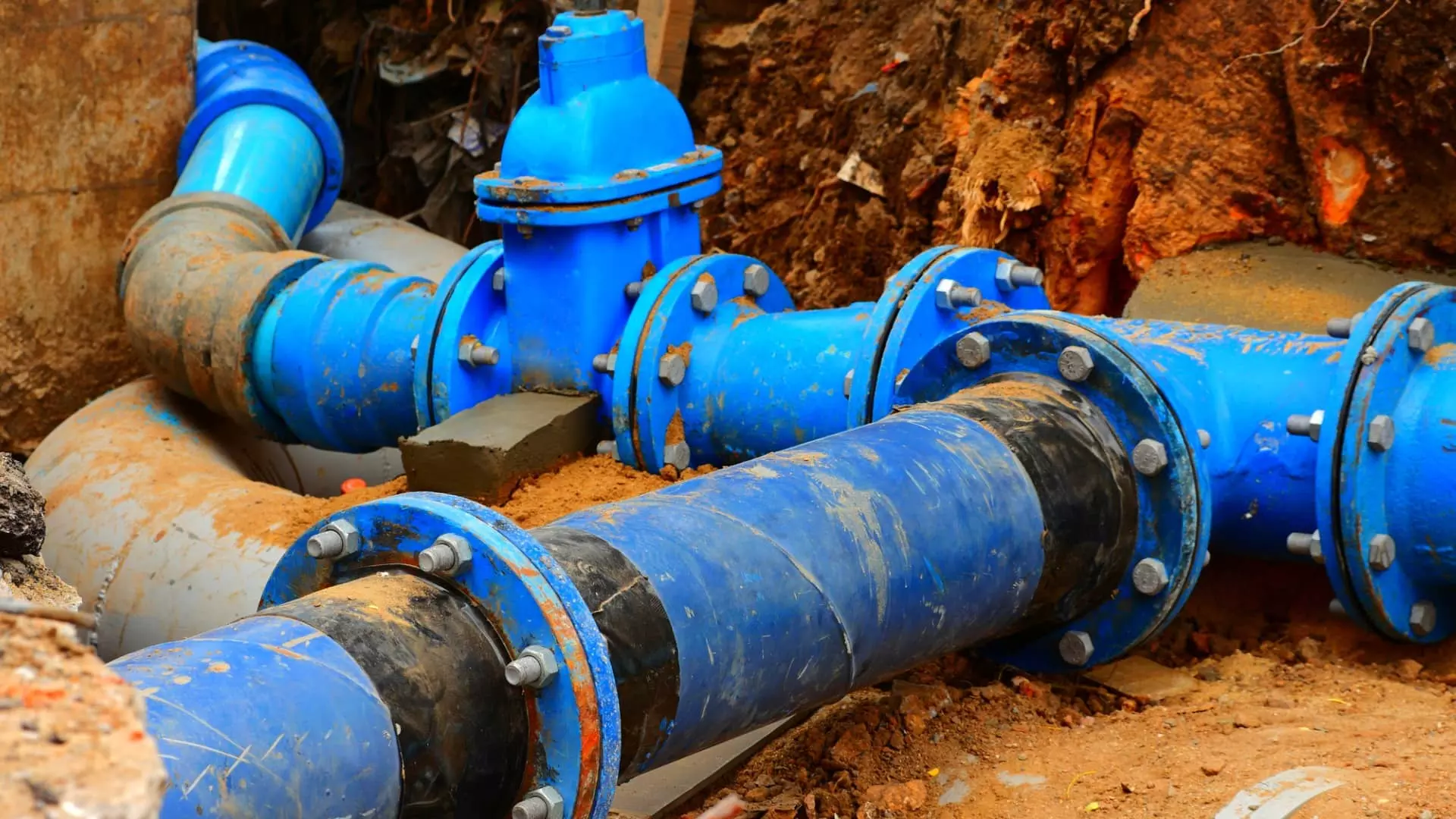Electrolysis and How It Impacts Fire Hydrants and Other WDS Assets

Emergency services depend on fire hydrants to save properties from fire damage while protecting residents from serious harm. Each community also depends on the water distribution system (WDS) to provide clean water for drinking and to manage their water requirements for their appliances, daily tasks, hygiene, and more.
When hydrants and their connecting systems aren’t well maintained, the water and sewer systems we depend on daily can experience serious functional issues that make it impossible to access safe, clean water when we need it most. Electrolysis is one of the issues contributing to hydrant and WDS asset damage. Although it is not necessarily a common occurrence, it is one of many causes of fire hydrant damage we can’t ignore.
Here we look at electrolysis and how it impacts fire hydrants and other components of the WDS.
What Causes Electrolysis?
When it comes to water systems, electrolysis refers to a direct electrical current going through the water line. This is very harmful, damaging pipes and impacting water quality in the water distribution system. Most systems are at risk for electrolysis because electrical wires and piping are often located in close proximity to each other.
As a result, the metal components in the system can attract electrical currents, allowing electricity to travel through the water in the pipes. A steel drainage system can work as the ground, providing an uninterrupted metal connection that enables electrical currents to leave and enter a building via local drainage systems. Once it starts, the link can’t be broken because everything is interconnected.
However, this is just one scenario. Another possibility is two different types of metal pipes touching each other. The different metals allow electrical currents to jump between the lines, causing galvanic corrosion. For example, a repair using galvanized screws to connect brass components can cause electrolysis. Another example is introducing brass fittings in an area where copper piping exists since copper pipes are particularly vulnerable to electrolysis damage. Any of these scenarios can cause corrosion in a water distribution system and damage components such as valves.
What Does Electrolysis Do?
The combination of electrolyzed water and piping causes corrosion of the pipes. This is common in copper pipes, which begin with pitting and continue to corrode pipes over time. Unfortunately, the damage can continue for years because pipes are not exposed. If pipes are exposed or accessed for repairs, the experienced eye might suspect electrolysis is behind the corrosion, especially if they spot a green discolouration of copper. This discolouration is caused by random electrical charges that arc along the pipes, forming bizarre patterns on the pipe’s surface.
How Can Electrolysis Be Determined?
There are common signs inspectors look for during a water distribution inspection, including:
- Corrosion
- Unusual odours
- Greenish pipe stains or other stains on metals
- Pitting
Locations close to electrical transportation systems, such as subways and LRT lines, are at higher risk for electrolysis caused by leaking currents. These currents can travel through the soil and into nearby pipes.
How Do We Stop Electrolysis from Happening?
Reducing the risk of electrolysis or preventing it altogether is possible by introducing plastic piping in new systems or when repairs are made. A plastic sleeve can also be applied to copper water lines. If new copper piping is used, it can be inserted through plastic tubing. There are also specialized insulating wraps that can protect pipes from exposure.
Preventative Measures
Municipalities should inspect their fire hydrants ideally every spring and fall. However, water management departments must remember that proper fire hydrant inspection requires more than just visual or static assessments. To identify potential issues, hydrant flushing identifies concerns throughout the entire distribution system, not just the individual hydrant.
A proactive maintenance schedule helps ensure that fire hydrants are operational, while a uni-directional flushing (UDF) program improves water distribution, capacity, and quality. Benefits of proactive fire hydrants maintenance and a comprehensive UDF program include:
- An ongoing collection of insightful, predictive infrastructure condition assessment data
- A water-efficient method of maintaining water distribution pipes using 40% less water than other methods
- Removal of tuberculation to reduce the potential impact on water quality, fire flows, and distribution system efficiency
- Restoration of capacity
- Flushing out harmful corrosion products and rust in fire hydrants
- Timely fire hydrant repairs and replacements to increase serviceability in the system
- Reduced impacts and liability of future line breaks caused by corrosion in fire hydrants
- Prolonged life of components such as valves
- The discovery of broken valves and faulty hydrant locations
- The discovery of closed valves or other obstructions in the water mains
- Understanding the specific causes of water quality or pressure issues within the system
- Exposing discrepancies between the hydraulic model and the actual distribution system performance
- Determining or disproving suspected system issues
Many municipalities today experience pipe failure rates and turbidity problems that exceed their water main replacement budget. This can impact the entire infrastructure when money must be reallocated to manage water main repairs. Also, when water mains are not flushed proactively, you incur higher costs because tuberculation is beyond the point of flushing.
The potential risks posed to your local WDS related to electrolysis can impact hydrant function as well as the safety and availability of water. Therefore, municipalities must take a proactive approach to maintain existing systems while ensuring that the risk for electrolysis is reduced as new infrastructure is introduced. By taking precautions, the available path for electricity is eliminated, along with the risk of electrolysis damage.
Contact a Professional
Velocity Water Services offers private, municipal, and industrial client services for all your water line needs. Our services include proactive maintenance programs, fire flow testing, uni-directional flushing, and more. Reach out to our team today to discuss practical solutions to protect your WDS and hydrants.